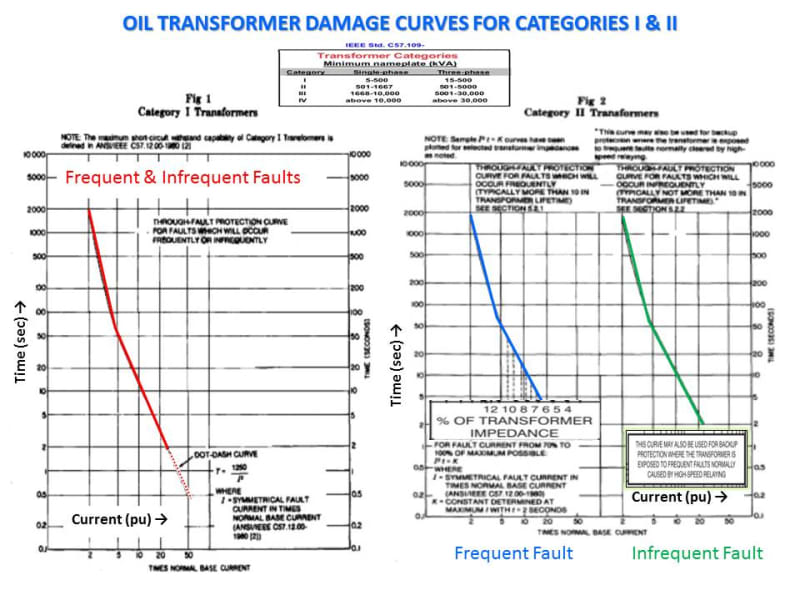Navigation
Install the app
How to install the app on iOS
Follow along with the video below to see how to install our site as a web app on your home screen.
Note: This feature may not be available in some browsers.
More options
You are using an out of date browser. It may not display this or other websites correctly.
You should upgrade or use an alternative browser.
You should upgrade or use an alternative browser.
IEC equivalent for ANSI C57.109? 3
- Thread starter Dvhez
- Start date
- Status
- Not open for further replies.
-
2
- #5
Scotty, equivalent IEEE standard to IEC 60076-7-2018 is C57.91-2011 ie Transformer loading guide; These covers -extent of permissible over loading. ageing rates, time constants, oil and winding temperature rises during transient loading etc, etc. C57.109-2018 " Guide for liquid immersed transformers through fault current duration" gives a series of graphs connecting times rated currents( ie fault currents) to permissible (or withstand) duration in seconds for different categories of distribution transformers. I found this popular in US and could not find anything equivalent in IEC world.
RRaghunath
Electrical
I am going to have a look at IEEE C57.109. Thanks.
- Thread starter
- #8
-
1
- #9
The IEEE Standards C57.109 and C57.12.59 cover SC Withstand Capability TCC damage characteristics for oil and dry-type transformers respectively. For Illustration, see below a typical transformer damage curve The concept of damage curve is not considered in the IEC.


IEC 60076-5 ed3.0-2006 Power Transformers-Ability to withstand short circuit do give the calculations for thermal withstand capability with short circuit currents. (Clause 4.1.5) IEC gives a maximum permissible average winding temperature of 250 C for copper wound, oil immersed transformers during the fault current flow. So you can estimate the time to reach this temperature for various values of fault current. But transformers engineers are convinced that failure from short circuit currents will occur during the first or second cycle due to dynamic forces rather than thermal overheating of windings. This is true esp with medium and large power transformers. That may be the reason IEEE also gives the damage curves only for distribution transformers where source impedances will be rather high. Then the fault current will be moderate and may take some time for the fuses to clear the fault. In such cases thermal withstand capability may be relevant.
- Status
- Not open for further replies.
Similar threads
- Replies
- 11
- Views
- 29
- Question
- Replies
- 4
- Views
- 102
- Question
- Replies
- 2
- Views
- 26
- Replies
- 0
- Views
- 10
- Replies
- 0
- Views
- 4
